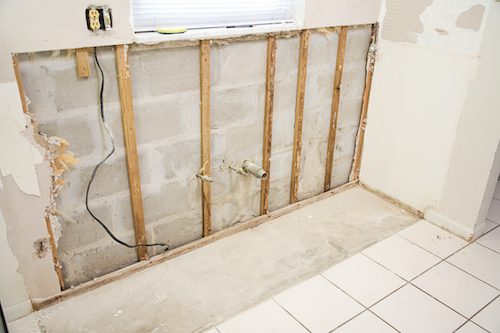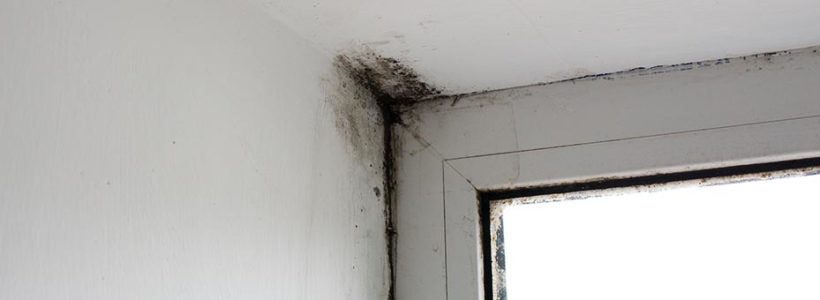Stain from Water on Wall Surfaces - Examination and Address Guidance
Stain from Water on Wall Surfaces - Examination and Address Guidance
Blog Article
Listed here in the next paragraph you can locate a bunch of sound news involving How to Find and Repair Water Leaking in the Wall.

Water stains on walls are not positive to the eyes. In some cases it appears almost inevitable to experience water spots on walls in residences.
House owners residing in moist regions frequently handle the anxiety of water spots on wall surfaces. But that does not need to be the case for you. With accurate as well as all-round details on the causes of water spots as well as punctual fixing procedures, you will certainly constantly be an action ahead of such occurrences. So, this article assures to be a helpful guide for you.
3 Common Sources Of Water Spots on Wall Surfaces
As opposed to common belief, water stains on wall surfaces do not constantly stem from bad structure materials. There are a number of sources of water stains on walls. These include:
Poor Water drainage
When making a building strategy, it is essential to make certain adequate drain. This will certainly prevent water from leaking right into the wall surfaces. Where the drainage system is blocked or nonexistent, underground moisture builds up. This links to extreme moisture that you notice on the walls of your structure.
So, the leading root cause of damp wall surfaces, in this situation, can be a poor drainage system. It can also be due to inadequate administration of sewage pipes that go through the building.
Damp
When warm moist air meets with completely dry chilly air, it creates water beads to form on the wall surfaces of buildings. This takes place in restrooms and also kitchen areas when there is vapor from cooking or showers. The water beads can tarnish the surrounding walls in these parts of your house as well as infect various other areas.
Damp or condensation impacts the roof and also walls of structures. This creates them to appear darker than various other areas of the residence. When the wall is wet, it creates an appropriate environment for the development of fungis and germs. These may have damaging effects on health, such as allergies and respiratory system problems.
Pipeline Leaks
The majority of residences have a network of pipes within the wall surfaces. This guarantees that the pipes are faraway from the reach of harmful rodents. It always increases the stability of such pipelines, as there is little oxygen within the wall surfaces. This inhibits rust.
Yet, a downside to this is that water leakage affects the wall surfaces of the building as well as triggers prevalent damage. An indication of faulty pipelines is the appearance of a water tarnish on the wall.
Water Discolorations on Wall: Repair Service Tips
When dealing with water discolorations, homeowners would normally desire a fast fix. Yet, they would certainly quickly understand this is counterproductive as the water spots persist. Here are a few helpful ideas that will certainly direct you in the fixing of water stains on wall surfaces:
Pro Suggestion
A houseplant in your home likewise raises its moisture. If the home is already humid, you might want to present houseplants with very little transpiration. An example of ideal houseplants is succulents.
Verdict
No one desires to have water discolorations on walls in their residence, it can happen to the best of us. This post provides you leverage, as you now understand just how to manage this mishap if it does happen.
It is constantly best to recruit professional solutions to assist fix the damages in your house.
Often it seems nearly unpreventable to experience water stains on walls in homes.
Contrary to preferred belief, water spots on wall surfaces do not constantly stem from inadequate structure products. There are several causes of water stains on wall surfaces. The water droplets can stain the surrounding wall surfaces in these components of your house as well as spread to other areas.
Here are a couple of valuable suggestions that will certainly guide you in the fixing of water stains on wall surfaces:
What To Do About A Water Stain On The Ceiling
Why This is Important
Not only are water stains a cosmetic issue, but they can also indicate that there is a leak in the home that needs to be fixed. Sometimes, this may be the first indicator of a bigger problem brewing or may have been a one time leaky issue. It is important to investigate to make sure it is under control before you possibly have thousands of dollars in repairs.
Identify the Cause of the Water Stain on the Ceiling and Where to Start
It is important to identify the cause of the water stain on the ceiling first so you can fix it. Start first with the roof to see if there are leaky shingles or missing shingles, missing flashing, or weakened seals around roof vents. You may need to get on top of the roof to look or call a professional to check for you. It is possible that water is coming into the home from the roof. So you will want to have the professional take a look to see if this is the issue.
Also, look in the attic to see if there is a pool of water and that will also help you to know if there is water leaking into the home.
Radiator or Air Handler on 2nd floor
In colder parts of the country, there may be a radiator on the second floor. Radiators are used to keep rooms warm in the cold months and do wear out or need replacing. Does the radiator have a pool of water underneath it or any dripping? If yes, this could be the problem and causing the water stain on the ceiling. Check the model of the radiator and see if it is something you can do yourself or call a professional to check the body, pipe, and the valve for leaks.
The same is true for those who have an air handler on the second floor. Did your AC stop working? Or do you see water leaking? The drip pan (if you have one) on an HVAC unit collects the water and it can become clogged and back up. The float switch (again, if you have one) will activate as soon as the water reaches a certain level and shut down the HVAC unit, thus not allowing the water to continue to flow. Make sure the HVAC doesn’t become clogged and checking this monthly is a good idea.
Upstairs Bathroom Can Cause a Water Stain on the Ceiling
Bathrooms are often the culprit as caulking wears out after about 10 years and needs replacing. Is the home older than 10 years? This may be the issue. While checking the caulking in the bathroom around the sinks, toilets, and shower/bath, also check for black mold in the shower. Might as well rule everything out while you are looking for the source.
Other areas to look at are toilets clogging and overflowing. Do you see water near the toilet on the floor? This could be the seal is broken on the toilet and it needs replacing. Also, adding caulk to the toilet to connect it to the floor is a good idea. If the toilet is continuously running, you can shut off the water and do the water meter test.
Write down the number on the water meter and then turn off the water for three hours. When you turn it back on, check the number on the water meter. If it has increased, then you have a leak in the indoor plumbing.
Taking care of these areas is essential as sewer gases can also be escaping. Sometimes these issues will soak the ceiling below and clog in sinks and drains in the shower can also cause flooding in a bathroom.
Put a Drop Cloth on the Floor
With goggles on and gloves, put a drop cloth on the floor. Then, take 3 glasses of warm water and one cup of bleach and mix it together. Set up a ladder and climb up to the stain. Use a sponge that is soaked in the concoction to rub it on the water stain to get it to come off. Take a spray bottle of plain water and spray the stain to get the bleach mixture off. This is important because you want to be able to prime it and paint it. Take a dry towel and rub the stain to help it dry faster. Next, put painters tape around the ceiling if the spot is near the walls. Apply an Oil Based, Stain Blocking Primer
Apply an oil based, stain blocking primer that is mold resistant that matches the ceiling. It is important to put the primer on first so the paint doesn’t soak into the ceiling. If you have a flat ceiling, you can use a paint roller with an extension to apply it. Once the primer has dried, apply the paint. If you have a textured ceiling, a spray on primer might work better.
Choose a Latex or Alkyd Ceiling Paint
The latex ceiling paint is water-based and dries faster than the oil-based paints and also is thicker than wall paint. Make sure that the paint matches the ceiling color. Using a roller, paint it on over the primer and let it dry for up to four hours. Then, apply a second coat and let it dry. The second coat should make the stain disappear.
https://insideandoutpropertyinspectors.com/water-stain-on-ceiling/

I found that piece of writing on How to Remove Water Stains from Walls and Ceilings when doing a search on the search engines. For those who liked our blog posting plz don't forget to share it. We cherish reading our article about Water Stains on Walls.
Plumbing woes? Contact. Report this page